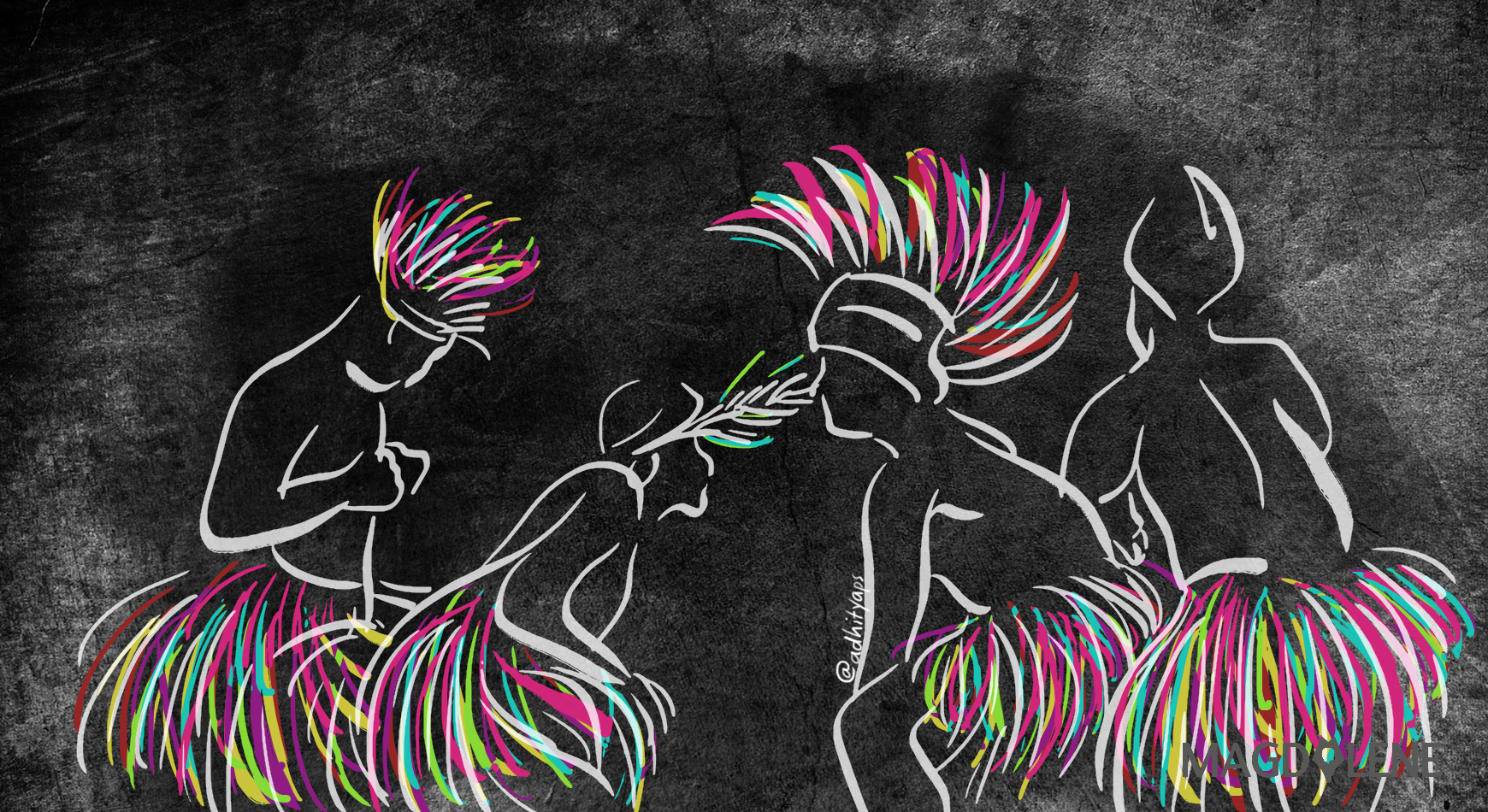For the last seven months, Australia’s Southern and Eastern coast has been ravaged by fire, releasing two thirds of the countries annual amount of carbon emissions into the atmosphere. It is predicted that it might take up to 100 years for the flora and fauna to reabsorb the carbon lost.
The scale of the devastation has led to calls for a different approach to prevent a climate disaster. While the extremes of the recent fires were increased by the effects of the climate crisis, listening to indigenous Australians might have helped prevent the devastation.
Two hundred years ago, the Dja Dja Wurrung Aboriginal clans of the South East Australian bush, would set fire to the grassland and scrub. In the cooler seasons, small flames would run along the forest floor, closely followed by tribesmen, who knew the land for every tree and river bend.
Indigenous Australians learned long ago that fire was important to keeping the Australian bush and its inhabitants alive, with values of connection to land and the sacredness of life informing practices that respected the desires of mother nature.
Tribal elders held stories of guidance and prosperity for the next generation, passed down through 60,000 years of harmony with the Australian landscape, telling of the power of fire and how to work with it, to ensure the survival of humans and animals alike.
“Fire can be used for multiple outcomes: to promote biodiversity, to reduce the scrub build up that fuels bushfires, and to encourage native grass to regenerate and become the food for native animals,” said Dr. Lynette Russell AM, Director of the Monash Indigenous Studies Centre. Russell has extensively studied and written about the use of fire or “back burning” in indigenous land management customs, and its role in the preservation of “country.”
Along with the use of fishing traps, and sowing and storing plants for long-term sustainability, the controlled burnings allow for protection of important cultural sights, endangered animals and the tall trees above the scrub during the seasons that leave them vulnerable to the wrath of raging bushfires.
The European invasion of Australia in 1770 has led to the stripping of the Indigenous Peoples’
rights to maintain the land. The colonial settlers rejected the traditional methods in favor of farming practices suited to an environment very different to Australia, resulting in a changing landscape and destruction of the environment. In 250 something years, the landscape that once supported 500 indigenous groups for 60,000 years has become dry, unworkable and vulnerable in many parts.
The colonists brought large scale agriculture, industrialization and a society that slowly demolished the natural world around it to make room for a growing population. This is a problem that exists globally. The current systems in place to feed, clothe and house a rapidly growing global population are doing damage to the environment worldwide, and have left many indigenous communities fighting at two fronts: preventing the increasing climate crisis, while defending against development and the forced takeover of indigenous lands.
Similar situation is faced by the indigenous communities in Indonesia. Despite the existence of the Biodiversity Strategy and Action Plan that recognize the role of traditional knowledge in conservation, the Indonesian government continues to clear indigenous land to make way for palm oil plantations and mines.
Andre Barahamin, the Director of Information and Communication at the Alliance of Indigenous Peoples of the Archipelago (AMAN), said that “various policies formulated by the government have deliberately ignored the contributions and lessons from indigenous peoples.”
The indigenous groups in Kalimantan, Sulawesi, Irian Jaya and Maluku have long harvest forest resources sustainably for products used by Indonesians on a daily basis. Medicine, foods, dyes and many other products come from at least 6,000 animal species and indigenous plants.
The Gajah Bertalut community of Riau in Sumatra follow their own form of adat or customs to determine who may utilize local territories or resources, and how. The community is headed by a tribal chief called Mamak Suku, who will establish the adat council Nini Mamak to govern and establish the adat rules. The rules can determine when practices such as fishing can occur, to prevent over fishing, preserve river ecosystems and ensure the sustainability of fish populations, as well as maintain rules around forest product cultivation.
Large scale plantations provide jobs and economic benefits to a country, but in the long run they do more harms than good.
“Many people are still unaware of the dangers posed by giant scale agriculture: how monoculture is not only bad for the environment, but also socially and culturally damaging. We must stop referring to the crisis that is affecting our planet as ‘just a climate change,’” Barahamin says.
Solutions might emerge from learning from the knowledge that have kept indigenous communities safe for generations. Small indigenous communities both in Australia and Indonesia have shown that this is possible.
In Australia, the Dja Dja Wurrung clans had their ownership of the land returned, and reignited their practices of burning last year.
When asked if a large scale adoption of these methods was viable, Russell was overwhelmingly affirmative. “It is most definitely possible, it’s now a matter of enabling these communities with the resources and allowances they need to undertake such practices.”’
A report published suggests that an increase in Australian Indigenous Land Management projects has produced improvements in health and wellbeing, housing and employment, and economic standing. In Indonesia, many online and offline shops now offer goods produced locally on a small scale as an alternative to mass produced and climate-altering products.
Instead of isolating indigenous communities as has been the common practice in many countries, we should listen to them with the willingness to adopt knowledge and traditions that could save our climate.







Comments